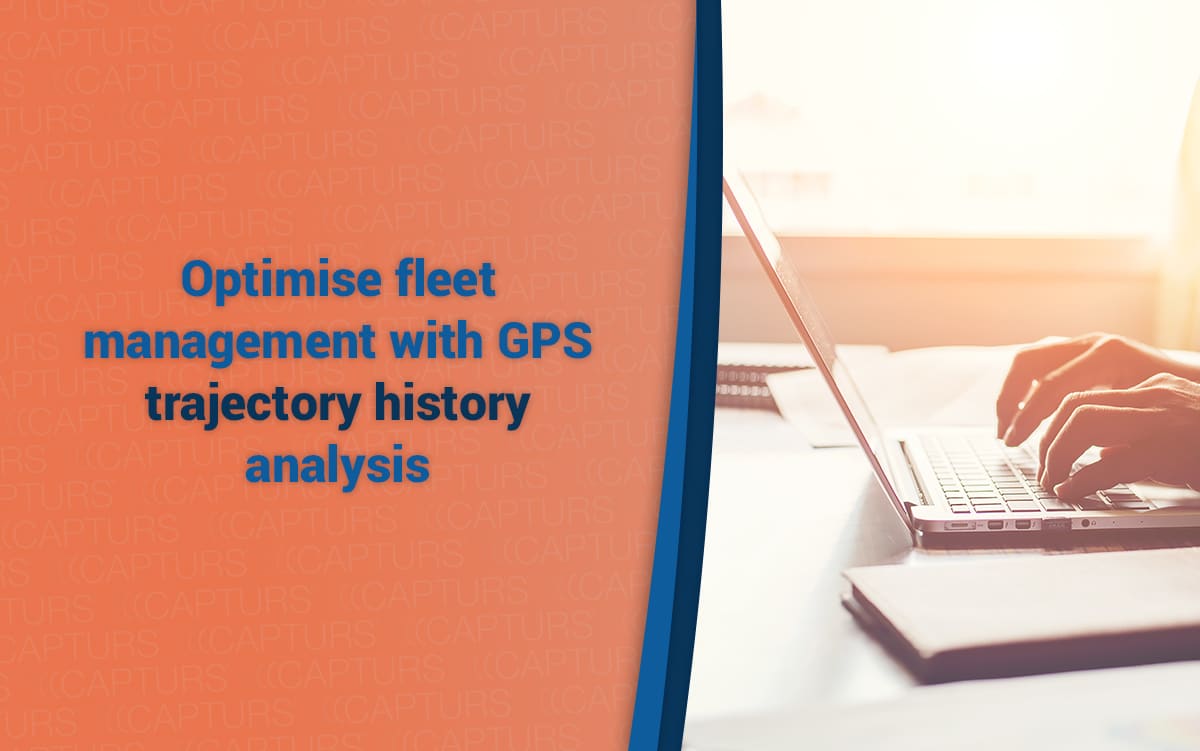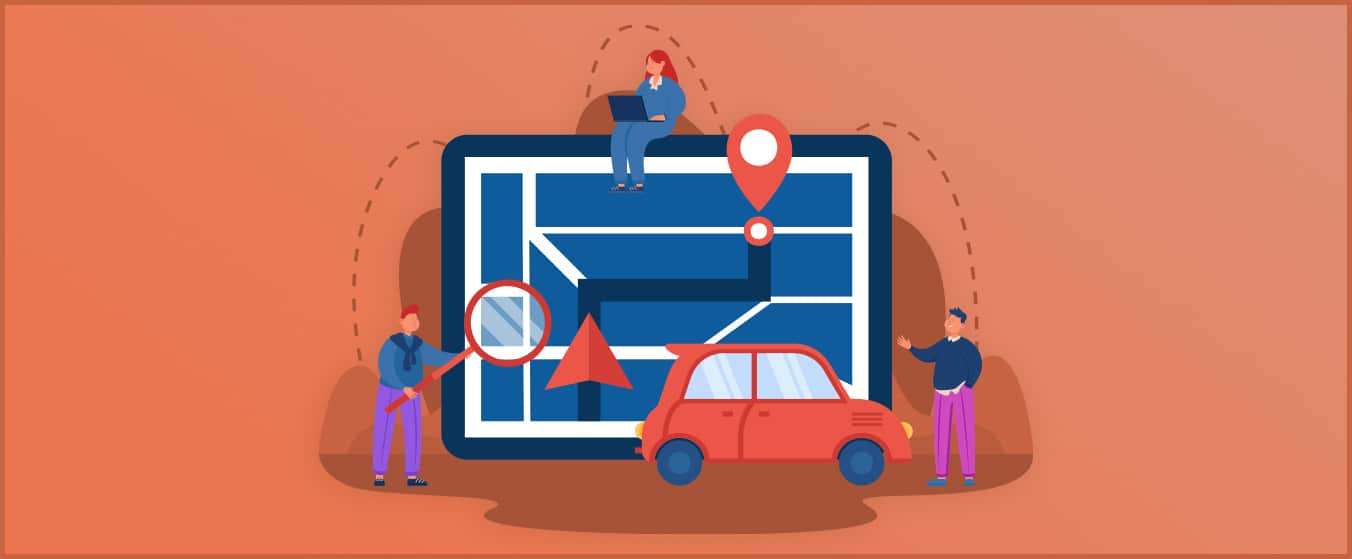Optimize fleet management with GPS trajectory history analysis

The use of GPS trackers for storing the history of vehicle fleet trajectories is becoming increasingly common in companies. GPS trackers allow to follow in real time the position of vehicles and to store location data for later analysis and thus monitor remotely the whole fleet of vehicles. By analyzing historical trajectories, companies can better understand their fleet’s activities, optimize routes to reduce fuel costs, improve vehicle and cargo safety, and plan preventive maintenance. Using this data, companies can make informed decisions to improve fleet management and increase profitability. In this article, we will detail the various features of GPS trackers, explain how they can be used to store track history, and analyze the benefits of this technology for efficient fleet management.
Storage of the history of the GPS trajectories of the cars by the GPS trackers
Storage of company car location data
A key feature of GPS trackers for vehicle fleets is the storage of track history. Location data is stored in a central server for later analysis. Data storage can be done in real time or at regular intervals, depending on business needs.
Location data can include date and time, GPS position, speed and direction of travel. The data can also include additional information, such as weather data, driving data, and loading data.
Storing location data allows companies to keep track of their fleet’s trajectories for later analysis. This allows companies to better understand their fleet activities and optimize their management. If needed, location data can be used to resolve fleet-related issues or conflicts, such as off-duty vehicle usage.
Storage of location data is a key aspect of storing trajectory history with GPS trackers. It allows companies to better understand their fleet operations and optimize their management for more efficient and cost-effective operations.

Analysis of trajectory history
Tracking distances traveled
Tracking distances traveled is one of the primary benefits of analyzing the history of trajectories with GPS trackers. Companies can get a detailed view of the distances traveled by each vehicle in their fleet over a given period of time. This allows them to measure the efficiency of each route and determine the most cost-effective routes for the fleet. Companies can also use this data to establish service contracts or pricing agreements based on distances traveled.
Identify the most frequent routes
Identifying the most frequent routes is another important use of trajectory history analysis. Companies can determine the most popular routes for their fleet and optimize routes to reduce fuel costs and driving times. This can also help improve vehicle safety by avoiding dangerous or difficult routes, but also increase employee efficiency.
High Traffic Area Detection
Another important use of path history analysis is the detection of high traffic areas. Companies can determine the areas where their vehicles spend the most time and the areas of high traffic. This can help optimize routes to reduce driving time and delays. Companies can also use this data to schedule preventive vehicle maintenance, which can reduce long-term maintenance costs.
Trajectories can also be used to justify a delay in an area because of a high-traffic route, or not being in an area at a certain time.
Analysis of driving times and breaks
Finally, driving time and break analysis is another important use of trajectory history analysis. Companies can determine the driving times and breaks for each vehicle in their fleet and verify that the driving times and breaks are in compliance with current regulations. Companies can also use this data to optimize routes and plan breaks for drivers to ensure their safety and well-being on the road. In addition, this data can also be used by companies to calculate working hours if no other means are in place.

Use of trajectory history to improve fleet management
Route optimization to reduce fuel costs
Optimizing routes to reduce fuel costs is one of the primary benefits of storing route history with GPS trackers. Companies can use location and distance tracking data to determine the most efficient routes for each vehicle in their fleet. Routes can be optimized based on criteria such as distance, driving time and high traffic areas. By reducing unnecessary driving distances, companies can reduce fuel costs and improve fleet efficiency.
In addition, analysis of trajectory history can identify the most fuel-efficient drivers. Companies can use this data to train drivers on good fuel-efficient driving practices to improve the fuel efficiency of their fleet.
Finally, using trajectory history to optimize routes and reduce fuel costs is an important part of effective fleet management. Companies can use location and distance tracking data to determine the most efficient routes to improve fleet efficiency and reduce fuel costs.
Improved safety of vehicles and their loads
Tracking history analysis can also help companies improve the security of their vehicles and cargo. GPS trackers allow for real-time tracking of vehicle location and movement, which can help prevent theft and incidents. In addition, analysis of historical trajectories can identify high-traffic areas and times of day when risks are highest, allowing companies to take the necessary steps to improve fleet security.
GPS car trackers can be used to monitor vehicle driving conditions, including speed and hard braking. This information can help companies identify drivers who are taking risks and train them on safe driving practices. This can reduce accidents and improve the safety of drivers, passengers and other road users.
They can be used to monitor the temperature and transport conditions of the load, which can help prevent damage and loss. Companies can use location data to track vehicle routes and time spent in transit, which can help ensure that the load is delivered on time and in good condition.
Using track history to improve the safety of vehicles and their cargo is another key benefit of storing track history with GPS trackers. Companies can use location and tracking data to prevent incidents, improve the safety of drivers, passengers and other road users, and ensure the safety and integrity of the load.

Analysis of driving behavior to improve road safety
Historical trajectory analysis can help companies improve their drivers’ driving behaviors. GPS trackers can track real-time speed, hard braking and directional changes, which can help identify inappropriate driving behaviors. Companies can use this data to train drivers on safe driving practices, reducing the risk of accidents and improving road safety.
Trajectory history can also help identify driving patterns that may be associated with increased crash risk. For example, an analysis of driving speed may reveal that some drivers frequently drive at excessively high or inappropriate speeds for the driving conditions. Companies can use this data to target drivers for additional safe driving training.
Finally, path history analysis can also help companies monitor driver driving behaviors in real time. Companies can use real-time data to monitor drivers who exhibit inappropriate driving behaviors and immediately notify them for intervention. This can help correct inappropriate driving behaviors before they become a more serious road safety issue.
In summary, using trajectory history to improve fleet management by analyzing driving behavior is another key benefit of storing trajectory history with GPS trackers. Companies can use the tracking data to train drivers on safe driving practices, identify inappropriate driving patterns and monitor driving behaviors in real time, thereby improving road safety.
Greenhouse gas emissions monitoring
The use of track history can also help companies monitor and reduce their fleet’s greenhouse gas emissions. GPS trackers allow for real-time tracking of vehicle fuel consumption, which can help companies assess the greenhouse gas emission levels of each vehicle.
Companies can use the tracking history to optimize vehicle routes and reduce miles traveled, which can reduce greenhouse gas emissions. Path history analysis can also allow companies to monitor fuel consumption in real time, which can help detect fuel consumption problems that can contribute to increased greenhouse gas emissions.
Finally, companies can use trajectory history to monitor drivers’ driving habits and encourage them to adopt more fuel-efficient behaviors. For example, by encouraging drivers to drive at lower speeds and make fewer sudden stops, companies can reduce their fleet’s greenhouse gas emissions.
In conclusion, using trajectory history to improve fleet management by tracking greenhouse gas emissions is another key benefit of storing trajectory history with GPS trackers. Companies can use tracking data to optimize routes, monitor fuel consumption and encourage drivers to adopt more fuel-efficient behaviors, which can help reduce greenhouse gas emissions.
